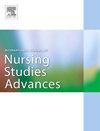护士主导的姑息治疗需求评估对患者生活质量和症状负担的有效性:一项系统综述
IF 3.1
Q1 NURSING
International Journal of Nursing Studies Advances
Pub Date : 2025-05-01
DOI:10.1016/j.ijnsa.2025.100343
引用次数: 0
摘要
最佳的姑息治疗需要对需求进行正确的评估。护士很适合承担这项任务,但护士主导的姑息治疗需求评估的有效性仍然不确定。目的评价护士主导的姑息治疗需求评估对成年肿瘤和非肿瘤患者生活质量、症状负担和住院率的影响。DesignSystematic审查。该综述已在国际前瞻性系统综述注册(PROSPERO)上注册(注册号CRD42023429259)。检索的数据源数据库为CINAHL、PubMed、Embase和MEDLINE,从成立到2024年4月。方法对于2023年5月进行并于2024年4月更新的英语随机对照试验进行系统回顾,研究护士主导的姑息治疗需求评估的影响。两名独立审稿人对论文进行筛选,两名审稿人使用Cochrane risk of bias 2工具独立进行数据提取和偏倚风险评估。根据感兴趣的结果结合研究,使用叙事综合方法对数据进行分析。结果共纳入6项试验,包括肿瘤患者(n = 4)、非肿瘤患者(n = 1)和去世的老年居民(n = 1)。两项研究的偏倚风险为“低”,两项研究的偏倚风险为“一些担忧”,两项研究的偏倚风险为“高度担忧”。在使用的需求评估工具和评估的结果措施方面存在异质性。研究人员在非肿瘤患者中进行了一项由护士领导和社会工作者领导的试验,结果显示,在统计上,患者的生活质量和症状负担得到了显著改善。研究人员在两项试验中没有发现差异,另外两项试验报告在生活质量和症状负担方面没有统计学上的显著改善。一组研究人员发现,6个月后住院治疗没有差异。没有研究评估病人的住院时间。结论护士主导的姑息治疗需求评估的有效性缺乏高质量的证据。未来的研究人员必须确定什么样的需求水平预示着较差的生活质量,评估适合当地情况的干预措施,并确定如何使用临床相关的结果测量来最好地评估它们的影响。本文章由计算机程序翻译,如有差异,请以英文原文为准。
The effectiveness of nurse-led palliative care needs assessment on patients’ quality of life and symptom burden: a systematic review
Background
Optimal palliative care requires a correct assessment of needs. Nurses are well-placed to undertake this task, but the effectiveness of nurse-led palliative care needs assessment remains uncertain.
Aim
To evaluate the evidence regarding the impact of nurse-led palliative care needs assessment on adult patients with oncological and non-oncological illnesses quality of life, symptom burden and hospitalisations.
Design
Systematic review. The review was registered on the international Prospective Register of Systematic Reviews (PROSPERO) (registration number CRD42023429259).
Data sources
Databases searched were CINAHL, PubMed, Embase, and MEDLINE from inception to April 2024.
Methods
A systematic review of English language, randomised controlled trials, conducted in May 2023, and updated in April 2024, on the impact of nurse-led palliative care needs assessment was undertaken. Two independent reviewers screened papers, and two reviewers independently conducted data extraction and risk of bias assessment using the Cochrane Risk of Bias 2 tool. The data were analysed using a narrative synthesis approach by combining studies according to the outcomes of interest.
Results
Six trials were included, involving oncological patients (n = 4), non-oncological patients (n = 1) and deceased aged-care residents (n = 1). Two studies had ‘low’ risk of bias, two had 'some concerns,' and two had 'high concerns.' There was heterogeneity in the needs assessment tools used and the outcome measures assessed. Researchers who conducted a nurse-led and social worker-led trial in non-oncological patients demonstrated statistically significant improvements in patient quality-of-life and symptom burden. Researchers in two trials found no difference, and two others reported statistically non-significant improvements in quality of life and symptom burden. One group of researchers found no difference in hospitalisations at 6 months. No studies evaluated the inpatient length of stay.
Conclusion
There is a paucity of high-quality evidence on the effectiveness of nurse-led palliative care needs assessments. Future researchers must identify what level of needs predicts poor quality of life, assess interventions tailored to local contexts, and determine how best to evaluate their impact using clinically relevant outcome measures.
求助全文
通过发布文献求助,成功后即可免费获取论文全文。
去求助
来源期刊

International Journal of Nursing Studies Advances
Nursing-General Nursing
CiteScore
5.80
自引率
0.00%
发文量
45
审稿时长
81 days
 求助内容:
求助内容: 应助结果提醒方式:
应助结果提醒方式:


